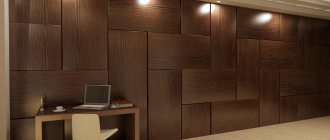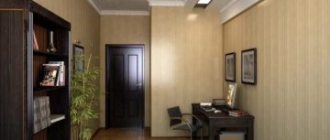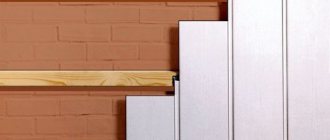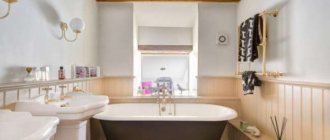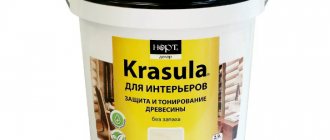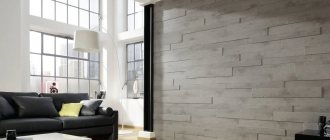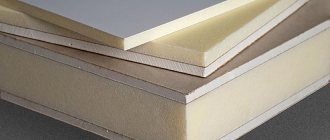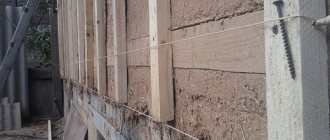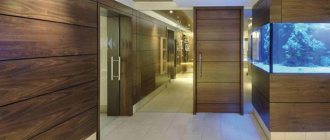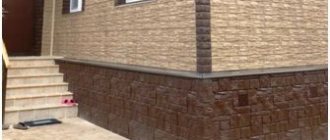Constant change of trends is inherent not only in the world of clothing, shoes and accessories, but also in interior design. More and more innovative materials are appearing, adapted to the lifestyle of modern people. But wood never goes out of style. Wooden panels for interior wall decoration are the best option for creating comfortable conditions.
Area and features of the use of wooden panels for interior wall decoration
The material fits organically into any design. It is distinguished by its uniqueness and grace. Using wood wall panels you can create a unique decorative surface. Due to the specificity of the material and its performance characteristics, the finish is suitable for indoor walls with low humidity. For rooms where this indicator is increased, special panels finished in wood look are used.
In the concept of a modern interior, they can decorate only one wall. For example, near the door, window opening, head of the bed, on balconies, provided that they are glazed.
Using wood wall panels you can create a unique decorative surface.
Eco panels made of natural wood
Wooden wall panels are made from valuable wood species such as walnut, ash, and oak. They are used to cover elegant living rooms, cozy bedrooms, formal offices, laconic hallways, and if the decorative panels are carefully coated with water-repellent wax, they are used to cover walls in rooms with high humidity.
This cladding varies depending on the design:
- smooth, seamless – fits well into modern style,
- paneled - for interior decoration in eco-classic style.
Important! The great advantage of using wood in interior design is that it is environmentally friendly, which is the reason why it is the most preferred option among a large number of people. Wooden structures are known to absorb as well as store atmospheric CO2, an essential element for life on earth.
Multilayer panels
The big disadvantage of panels made from valuable wood varieties is their high cost. Under such conditions, manufacturers came up with a way out to somehow reduce the price of a popular building material. They launched the production of multilayer panels. Three-layer products are used to decorate walls inside any room of a house or apartment: bedrooms, children's rooms, kitchens. The panel consists of three panels glued together. Thanks to this, the panels are not subject to temperature factors, as well as bending and warping.
Wood cladding in the living room of a city apartment
The inner layers are made from inexpensive types of trees (spruce or pine), and the decorative front layers are made from oak, beech, walnut and other valuable wood. In this case, all three layers are glued together so that the direction of the fibers in each of them is mutually perpendicular. This eliminates the possibility of loss of strength due to exposure to humidity and temperature.
Like any other wood product, decorative wood panels require special care. The humidity level should not cross the normal limit. The wooden surface is protected by covering it with special wax or acrylic varnish.
For reference. Species such as cedar or red pine look great without a coating and do not require a protective layer.
The advantages of wood finishing materials are environmental friendliness, unique appearance, and thermal insulation.
Undoubtedly, wall decoration with wooden panels has not lost any of its popularity with the advent of new materials that require a minimum of care. On the contrary, products made from natural materials are increasingly valued. Ecological cleanliness, a unique natural look and warmth preservation come to the fore.
Decorating a balcony with wood is a way to get a warm, stylish and cozy room. At the same time, we should not forget that temperature changes are the main cause of cracks, since wood expands when heated and contracts when cold. The key to keeping wood products in perfect condition is maintaining constant temperature and humidity. Heat for wooden products is not as bad as constant temperature fluctuations: from hot to very cold and vice versa.
Advantages and disadvantages of wooden panels for wall decoration
Wooden wall panels have many more positive aspects than negative ones. The most tangible and weighty argument in their favor is the simplicity and speed of installation of the material. Plus:
- Variability of products. You can always choose the right specimen from a wide variety;
- Wide choice of palette. If desired, they can always be repainted in the desired color;
- Affordable price range. For a small cost, you can give the room a fashionable and noble look;
- Solid wood panels for walls are of high quality;
- Possibility of creating exclusive, individual models.
Ease of choice due to the many different sizes. This is a natural material, so it is perfectly breathable and does not emit toxic substances at any temperature. This decor does not require particularly careful surface preparation. In addition, behind such panels, shields or slabs you can easily hide communication systems and their components. With proper care, this finish does not lose its original appearance even over time.
This is a natural material, so it is perfectly breathable and does not emit toxic substances at any temperature.
Among the disadvantages is the reduction in the usable area of the room, provided that the installation is carried out in the classical way, which requires a solid frame.
True, there is another way - to put wooden elements on glue. This method requires a surface without drops and cracks.
Among the disadvantages is the reduction in the usable area of the room, provided that the installation is carried out in the classical way.
Installation stages
To install walls made of wooden panels you will need:
- team of 3-5 people;
- crane;
- metal fastener.
During production, each part is assigned its own place, they are numbered and sequentially laid out on a loader for further transportation to the collection point. Installation is carried out on a ready-made foundation . Since the structure is very light, either a monolithic slab or strip or other types of structures can be used as a base.
Procedure:
The load-bearing wall is installed on a pre-prepared frame made of long wooden blocks.
A layer of rolled waterproofing is laid between the wall and the ceiling. The part is fixed at an angle of 90 degrees relative to the ceiling using special metal fasteners - steel plates, glued and screwed-in rods.- The walls at the corners are also connected to each other using metal fasteners. As a result, corners are the only place where a cold bridge can form; later it must be insulated.
- A ceiling is installed on top of the wall, which, in most cases, is also made of CLT panels.
Making the frame of a small private building takes on average 2-3 days if the team works in 2 shifts. Houses made of wooden panels are among the fastest in terms of construction speed.
The construction of one wall takes 20 minutes and requires the involvement of qualified specialists.
Types of wooden panels for walls
By predominant variability we mean not only a wide selection of colors, but also the type of material itself, chipboard, MDF, solid wood, OSB boards and other types.
From the array
Solid natural material is of high quality. The demand for it never falls. This material is often used for finishing offices and libraries. Mostly valuable wood species are used for their production.
Solid natural material is of high quality.
From MDF
Wooden MDF wall panels are made from dry sawdust, pressed using the dry pressing method. Such models are distinguished by high performance properties, ease of installation and maintenance. They can be installed without preliminary preparation of the walls. The panels are equally mounted vertically, horizontally and at an angle. In turn, they are divided into:
- Solid;
- Laminated;
- Glossy;
- With increased moisture resistance.
Solid elements have smooth sides on all sides. Laminated ones can be purchased with any pattern that is applied to the polymer film covering the front side. This treatment gives the product more protection against external influences.
Wooden MDF wall panels are made from dry sawdust, pressed using the dry pressing method.
Veneered
Veneered models are based on the same MDF with its advantageous characteristics. Veneer is a thin sheet of natural wood. More expensive models are made from rare wood. Products made from spruce and pine are slightly more affordable. However, the most common are models made of birch, cherry, walnut, oak, and so on.
Veneer is a thin sheet of natural wood.
OSB boards
In construction markets you can find boards called OSB or OSB. The products differ in that they are made not from sawdust, but from wood chips. Each layer is superimposed on each other perpendicularly, due to which the panels acquire sufficient elasticity and strength. OSB boards are classified where OSB -1 is the cheapest due to its low resistance, and OSB -4 is more expensive as it is resistant and can be used in wet environments.
The products differ in that they are made not from sawdust, but from wood chips.
And other possible options
There are a number of other starting materials existing on the domestic market. Wooden wall panels made of bamboo or rattan are lightweight. They are often used in extravagant interiors. 3D panels are made by hot pressing wood of different species. The result is an interesting product with a profile of a complex configuration. For their production, only rare species of wood are used.
Despite the applied 3D coating, MDF panels are not recommended for installation in areas where there is constant moisture.
Wooden wall panels made of bamboo or rattan are lightweight.
What types of wall panels are there for interior decoration (forms of release)
- 3.1 Chipboard wall panels
Wall panels are an advantageous finishing option. They can be mounted on a base of any curvature and appearance. When installing them, the long and difficult process of plastering and putty is not necessary. Wall panels for interior decoration are attached to a lathing made of wooden blocks or metal profiles, thereby hiding any unevenness. This finishing material is produced in three types: in the form of sheets, plates and slats. Let's look at each type in more detail.
In modern interiors, wall finishing panels look dynamic
Slatted panels for wall decoration
They have a small width. but a significant length. They are connected to each other using the tongue and groove principle. There are slatted wall panels for interior decoration, in which the joints are barely noticeable, and there are others with a pronounced relief. Among the installation features: the sheathing should be located perpendicular to the direction of installation. If you install the planks horizontally, the sheathing should be vertical.
Made from MDF, chipboard, fiberboard and plastic (PVC), they are widely used. PVC slatted panels are popular for budget finishing of walls and ceilings in bathrooms and kitchens. Their disadvantage is fragility. Under mechanical loads, the plastic bends and, in rare cases, may crack. For places with high humidity, you can use MDF panels (except for places in direct contact with water). Slatted fiberboard and chipboard panels are more suitable for dry rooms. They are distinguished by much higher resistance to loads. Good for decorating walls in hallways, corridors, and living rooms.
Plastic panels for interior wall decoration - space for design ideas
Slatted panels for fiberboard walls - a budget option
During installation, slatted panels are attached to the sheathing with self-tapping screws or staples from a construction stapler. There are also special fasteners: clamps. A clamp is attached to the sheathing, and it holds the rail with its protruding part - the tongue. In general, clamps are used for mounting wall panels for interior decoration of any type. This is a convenient hidden installation system.
Installation of slatted wall panels can be carried out in horizontal, vertical, inclined directions. The least amount of waste is achieved with vertical or horizontal installation. Although the slatted panels have a considerable length (from 2.4 m), there are still joints. There are special joining strips for their decoration. Special additional elements are used to decorate internal and external corners, and starting strips are used to decorate the edges of the trim.
Vertical, horizontal, oblique, same width, different….
In general, it is worth saying that slatted wall panels for interior decoration are a good choice. Their appearance is combined with ethnic, loft, modern, and some classical styles. In fact, everything depends on the appearance of the panel. They can imitate wood, ceramic tiles, and stone surfaces. Honestly, the imitation on PVC wall panels is “so-so”. Even from a considerable distance you can see that it is plastic. The wood relief looks more realistic on MDF slatted panels, a little worse on chipboard.
Wall slabs
Panels for finishing walls in rooms are produced in the form of slabs. They have a rectangular or square shape. The maximum size for squares is 100*100 cm, for rectangular ones – 120*80 cm. Among the installation features, the sheathing must be made to match the size of the slabs. In some systems, fragments are joined using joining profiles, which are visible between the slabs and may have a different color (most often darker). Due to this, the wall looks more voluminous.
Wall panels for interior decoration are large format
Slab wall panels for interior decoration are produced from MDF, chipboard, wood, gypsum, metal (aluminum, painted or stainless steel). In our climate, metal wall panels are rarely used for interior decoration. But MDF and chipboard are popular finishing materials for residential premises and corridors. They can be either smoothly painted in one color or imitating wood, stone or brickwork, ceramic tiles, and concrete. Unlike plastic panels, the imitation is reliable, since the manufacturing technology makes it possible to make the surface not smooth, but textured.
This is one kind of gypsum wall finishing panels
Gypsum wall panels have a deep texture. This is the material that is called volumetric or 3D panels. Due to the high plasticity of gypsum, you can create a surface of any shape. Such slabs are white, but can be painted.
Sheet finishing material for walls
Sheet wall panels for interior wall decoration have substantial dimensions - height from 220 mm to 300 mm, width usually 125 cm. Their advantage is that you can find such a size that the slab occupies an area from floor to ceiling. In terms of width, they will most likely have to be joined, but the joints are designed as trim, so it looks good. One of the installation features is that in case of small unevenness on the wall, they can be attached directly to the wall, without lathing.
sheet wall panels are a way to quickly level walls and finish them at the same time
Sheet wall panels are made from PVC, laminated chipboard and fibreboard, MDF. Plastic sheet panels are good for wet rooms - bathrooms, kitchens. Ceramic tiles, brick and stone masonry are often imitated. The desired relief is formed on the plastic, so this imitation looks quite believable. There are also sheet plastic panels with photo printing. They are often used as kitchen splashbacks - to finish a work wall instead of ceramic tiles.
Sheet wall panels made of laminated fiberboard are one of the budget options for interior decoration. Most often it imitates wood, but can be found for brick and stone masonry, smoothly painted. Due to the hygroscopicity of the material, they are used only in dry rooms - corridors, living rooms.
MDF sheet panels with imitation brick and stonework
MDF sheets can be used in conditions of high humidity; chipboard finishing material is suitable for decorating rooms with normal humidity. In terms of texture and color, the options are the same: imitation wood, stone and brickwork, plain-painted sheets. MDF wall boards can have a relief pattern (3D). But, unlike plaster, they cannot be painted.
Types of wooden coverings by shape
Wall panels are practical due to the variety of shapes. Using various combinations, you can get an unusual design for a room or space. The correct size of material will help simplify the installation process. There are a number of popular elements.
Using various combinations, you can get an unusual design for a room or space.
Tiles
Wooden slabs for walls are square-shaped models. As a rule, you can find tiles in two sizes: 90 by 90 centimeters and 30 by 30 centimeters. The variety of colors allows you to create different compositions. In most cases, they are used for interior decoration due to ease of installation.
Wooden slabs for walls are square-shaped models.
Slatted panels
Elements in the form of small boards. Their maximum length does not exceed two and a half meters, and their width can vary. Like laminate lamellas, they are attached to each other using a tongue-and-groove connection. They visually expand the room.
Elements in the form of small boards.
Sheets
To save time on finishing work in large rooms, it is optimal to use sheets. Their size on average is 1 meter 22 centimeters by 2 meters and 44 centimeters.
To save time on finishing work in large rooms, it is optimal to use sheets.
And other possible options
A new product on the finishing materials market is gusvar block. This is a type of eurolining with textured relief patterns on the front side. Taking into account the functional purpose of the element, it is secured using a standard tongue-and-groove locking connection.
Depending on the dimensions of the room, as well as its stylistic direction, you can use block house, eurolining, slats, laminate, timber to decorate the walls.
This is a type of eurolining with textured relief patterns on the front side.
Application in stylistic interiors
Wood panels can fit into any style as they come in a variety of designs. Among the many shades and textures, you can always find the appropriate type of slabs or sheets for finishing a particular interior.
Most often, wood is used in the following areas:
- Scandinavian style. Nordic design, characterized by an abundance of light colors, can be achieved using slatted slabs painted in white, pistachio, mint or dove shades. Light colors make the atmosphere more cozy and harmonious.
- Marine theme. Mediterranean style flooring is often painted in bright colors such as red or blue. This technique is usually used in bathroom cladding. In residential areas, bright areas act as accents.
- Provence. For a rustic style with romantic features, you can choose panels made from light wood. An interior decorated in light shades of green, blue or gray will look original. Greater effectiveness can be achieved by artificially aging wood .
- Loft. Industrial design welcomes natural materials, so finishing should be done without additional coloring. The best solution would be real wood treated with protective compounds.
- Classic. Classic interiors are rarely complete without wood in decoration. The walls can be completely covered with wooden sheets in light shades. Dark panels are used only for the lower part of the wall surfaces, and the rest is decorated with wallpaper or other material.
Wooden panels are used in the decoration of various rooms . In order for the material to last for a long time, it is necessary to choose the right version of products that will not deteriorate under the influence of moisture, mechanical loads and other factors. An interior decorated with wood always looks warm and cozy.
Color range of wooden panels for walls
An abundance of colors with the possibility of repainting is an ideal option for creating individual interior projects. When choosing the color of the panels, you need to rely on the palette of the room as a whole.
When choosing the color of the panels, you need to rely on the palette of the room as a whole.
White
White is a popular color in residential areas. It is versatile and fits perfectly into any design. At the same time, a solidity of the room is created, which can be diversified with the help of bright accents.
White is a popular color in residential areas.
And other possible options
The restraint and taste of the apartment owners will be conveyed by the beige shade, which, like white, harmonizes perfectly with any interior. This also applies to gray. But with black, despite its classics, you should be careful. They can only decorate one wall.
The restraint and taste of the apartment owners will be conveyed by the beige shade, which, like white, harmonizes perfectly with any interior.
Disadvantages of facing material
Wooden panels, like other materials, have disadvantages that you should pay attention to before purchasing. Wood is not always a profitable solution for home decoration.
Significant disadvantages for some people may include:
- Low degree of water resistance. Since wood does not tolerate moisture, panels made from this material are not recommended for installation in rooms such as a bathroom or kitchen. Increased humidity levels can lead to the appearance of fungus and mold on the finish .
- High price. High-quality natural products are expensive. Not everyone can afford such luxury.
- Reducing space. To mount the panels, a frame or sheathing is usually used. This base hides part of the room, and it becomes a little smaller.
To save space, sometimes walls are lined with wooden slabs using special adhesives, but then high-quality alignment of the walls will first be required. Wealthy people can afford to decorate their bathroom or kitchen with decorative items with a moisture-resistant coating.
As you can see, wooden material does not have many disadvantages. Despite the high cost, people often choose this type of cladding for wall surfaces.
The use of wood panels for different design styles
The color scheme and texture of the material should be taken into account based on the overall concept of the interior of the room. Among the many styles, only a few stand out in interior decoration.
The color scheme and texture of the material should be taken into account based on the overall concept of the interior of the room.
Scandinavian
Northern style. It is dominated by light shades. Slat panels painted in light blue and green shades will fit perfectly. They will make the atmosphere in the house more comfortable.
In the Scandinavian style, light shades predominate.
Provence
Romantic features are characteristic of French Provence with its lavender melodies. Wooden panels for light-colored walls fit here. Shades of gray, blue and green predominate.
Romantic features are characteristic of French Provence with its lavender melodies.
Loft
An ultra-modern direction of interior design, which welcomes a certain “roughness” and the use of elements bestowed by nature itself. In it, like in no other interior, panels of a natural shade would be appropriate.
In a loft style, panels of a natural shade would be appropriate as in any other interior.
And other possible options
The use of wood is relevant for the classical style, as well as modern. To decorate a room, it is better to use light colors, and it is advisable to install dark-colored boards closer to the floor, creating contrast.
The use of wood is relevant for the classical style, as well as modern.
Beautiful wooden walls in the interior (lining, boards, etc.)
As a rule, interior wall decoration with wood is made from expensive species: solid maple, cedar, oak, alder, cherry, pear, beech or other trees. They are not as afraid of moisture and temperature changes as more traditional pine, but due to its high cost, it is sometimes easier to use it, only with the addition of a protective coating.
Lining is increasingly used in country houses, while in modern apartments and private houses it has become fashionable to use boards and laminate. Wooden walls made using:
- Imitation of aged wood;
- Using bleached wood technology;
- A saw cut that allows you to feel the natural pristine nature of the interior.
Note that wood wall decoration can completely cover the walls or be used as a decorative element. With the latter option, it is installed behind a sofa, headboard, TV or fireplace, as well as in combination with stone, brick and painted walls.
Also read: Brick walls and other features of the loft style
We invite you to enjoy 12 more stunning photos of wood wall decoration in the interior. Notice how the texture and color of the wood defines the style of each space.
Also read: Wooden private houses - types of facades and photos
Methods for installing wooden panels on walls
There are several options for covering walls with panels. When choosing an installation method, you must remember that slabs or beams are not only a decorative element, but are also capable of hiding defects and some components of communication systems. Place the panels on glue. To do this, the rough version of the walls must be perfect. If there are differences of more than half a centimeter, you need to carefully putty and level the walls. The adhesive solution is applied with a relief spatula to the surface.
If glue gets on the front surface of the material, it is immediately removed.
The panels can be secured with brackets that are attached to the rough surface using the previously made markings. The brackets are fixed with self-tapping screws according to the markings. The first panel is always mounted in the corner of the wall. For large wooden slabs and panels, it is better to use profiles. This is the most labor-intensive method. In addition, mounting profiles slightly conceals the usable area of the room. Fixing wooden panels to the wall begins from the corner of the surface, as in previous cases.
Fixing wooden panels to the wall starts from the corner of the surface.
Taking into account the large selection of raw materials in construction markets, it is possible to create unique chic and comfort for people of any income. When choosing wooden panels, the quality of the coating, the size of the room and the stylistic direction are taken into account.
Wall decoration with wood: choosing material
When choosing wood for decorative wall decoration, you should pay special attention to the quality and effectiveness of the selected material in the interior. The advantages of natural wooden walls in the interior are:
- Eco-friendly coating;
- Practicality and durability;
- Good heat and sound insulation;
- Ability to combine perfectly with modern materials;
- Large selection of beautiful shades and textures.
As with exterior work, interior wall decoration with wood can be done using wax or oil impregnation, various stains, varnishes and paints, which give a sophisticated look to the simplest board and significantly increase its service life.
Below we will look at and compare the features of using wood and wooden panels in the interior of houses and apartments, and also provide 30 inspiring photos.
Wooden 3D panels
At first glance, 3D panels look like a wooden plank, onto which a three-dimensional pattern is applied on top. But it is not so. Often MDF panels are taken, onto which not a drawing is applied, but various wooden elements. This decor completely covers the entire canvas.
During installation of such panels, it is necessary to connect special fasteners to each other. This will ensure the creation of the effect of a monolithic canvas, on which the joints will not be visible.
During production, 3D panels are covered with a laminating film, onto which the decor is already attached. Due to this protection, the material has high water-resistant properties. The wooden elements are fixed quite firmly, so the panel has good resistance to mechanical damage.
The only drawback of the panels is the need for regular cleaning. You need to constantly remove dust with a brush so that it does not accumulate in the decor.
